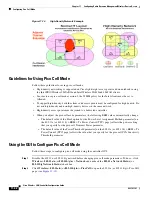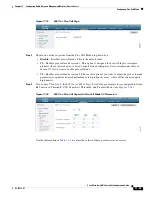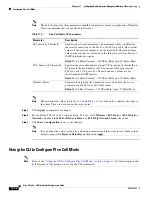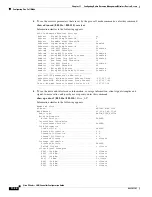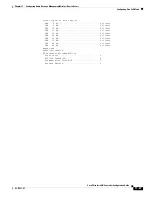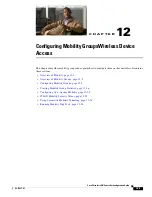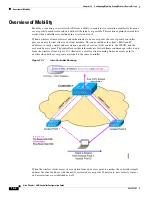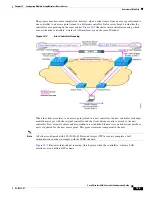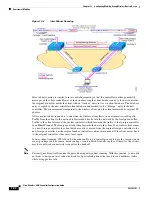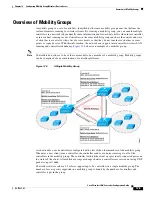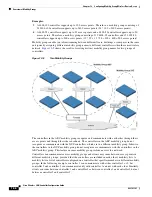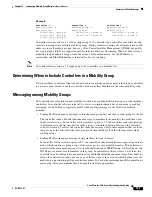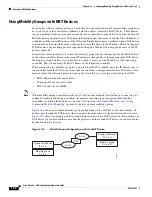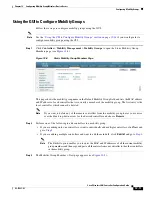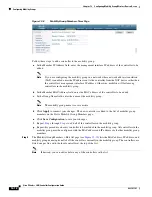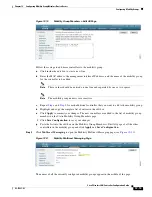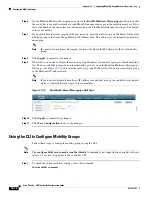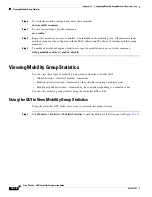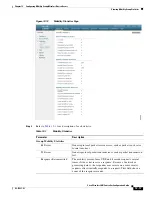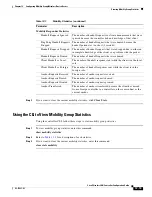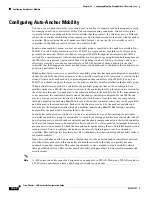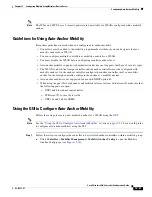
12-7
Cisco Wireless LAN Controller Configuration Guide
OL-17037-01
Chapter 12 Configuring Mobility GroupsWireless Device Access
Overview of Mobility Groups
Example:
Controller 1
Controller 2
Controller 3
Mobility group: A
Mobility group: A
Mobility group: C
Mobility list:
Mobility list:
Mobility list:
Controller 1 (group A)
Controller 1 (group A)
Controller 1 (group A)
Controller 2 (group A)
Controller 2 (group A)
Controller 3 (group C)
Controller 3 (group C)
Controller software release 5.1 or later supports up to 72 controllers in a controller’s mobility list and
seamless roaming across multiple mobility groups. During seamless roaming, the client maintains its IP
address across all mobility groups; however, Cisco Centralized Key Management (CCKM) and public
key cryptography (PKC) are supported only for intra-mobility-group roaming. When a client crosses a
mobility group boundary during a roam, the client is fully authenticated, but the IP address is
maintained, and EtherIP tunneling is initiated for Layer 3 roaming.
Note
Controller software release 5.0 supports up to 48 controllers in a mobility list.
Determining When to Include Controllers in a Mobility Group
If it is possible for a wireless client in your network to roam from an access point joined to one controller
to an access point joined to another controller, both controllers should be in the same mobility group.
Messaging among Mobility Groups
The controller provides inter-subnet mobility for clients by sending mobility messages to other member
controllers. In controller software release 5.0 or later, two improvements have been made to mobility
messaging, each of which is especially useful when sending messages to the full list of mobility
members:
•
Sending Mobile Announce messages within the same group first and then to other groups in the list
The controller sends a Mobile Announce message to members in the mobility list each time a new
client associates to it. In controller software releases prior to 5.0, the controller sends this message
to all members in the list irrespective of the group to which they belong. However, in controller
software release 5.0 or later, the controller sends the message only to those members that are in the
same group as the controller (the local group) and then includes all of the other members while
sending retries.
•
Sending Mobile Announce messages using multicast instead of unicast
In controller software releases prior to 5.0, the controller sends all mobility messages using unicast
mode, which requires sending a copy of the messages to every mobility member. This behavior is
not efficient because many messages (such as Mobile Announce, PMK Update, AP List Update, and
IDS Shun) are meant for all members in the group. In controller software release 5.0 or later, the
controller may be configured to use multicast to send the Mobile Announce messages. This behavior
allows the controller to send only one copy of the message to the network, which destines it to the
multicast group containing all the mobility members. To derive the maximum benefit from multicast
messaging, Cisco recommends that it be enabled on all group members.


